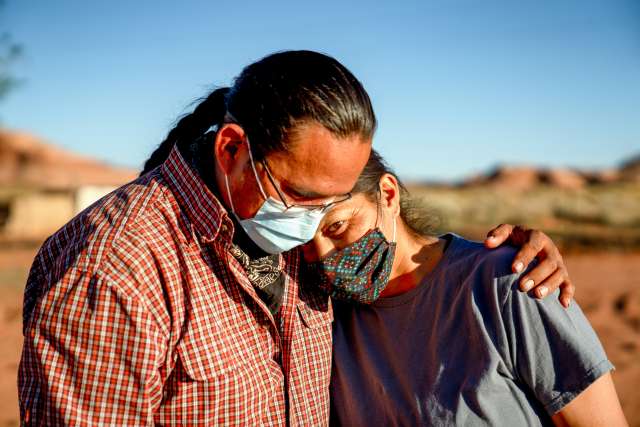An increase in mortality among middle-aged Americans – largely attributed to “deaths of despair” from suicide, drug overdoses, and alcoholic liver disease – has been frequently portrayed as a phenomenon affecting white communities. Under a common narrative, these deaths have often been explained by the perceived loss of status felt by many less-educated white Americans as their economic opportunities declined and their social standing diminished.
However, a new analysis in The Lancet led by UCLA researchers shows that Native American people in this midlife age group (45-54 years) actually have had the biggest increases in mortality in recent decades, and are now dying at twice the rate of white people of the same age. Further, Native American communities collectively have the highest rates of mortality from each of the causes of “deaths of despair.”
This tragic toll has been overlooked in mainstream discussion about deaths of despair because health policy data on Native American communities are often ignored or incomplete, . That includes an influential 2015 study that coined the term and sparked a national conversation about “deaths of despair,” which did not consider mortality data among Native Americans. Many of the follow-up studies on the topic also did not include data on Native Americans.
“Many people reading about the ‘deaths of despair’ in recent years could easily have thought that white individuals were the most affected by premature mortality and decreases in life expectancy, because the theory focused on the ‘uniqueness’ of this phenomenon for white communities. But a careful read of the data shows that Native individuals have had the biggest increases in premature mortality, and overall Black and Native communities have been the most affected in all years of available data. It’s important that these inequalities be shown and discussed, rather than hidden, so that we can mobilize resources and work to improve them,” said corresponding author Joseph Friedman, PhD, MPH, of the David Geffen School of Medicine at UCLA.
Between 1999 and 2013, the final year of data used in the 2015 study, publicly available mortality records from the Centers for Disease Control and Prevention show that midlife mortality among white Americans increased 8.9%. During this period, mortality among midlife Native Americans increased 29.3%, or over three times greater than the observed increase among white Americans.
The researchers also drilled down further to examine deaths of despair-related causes among this midlife group. In 2013, Native Americans had a 75.9% higher midlife death rate than white Americans. In 2020, the first year of the COVID-19 pandemic, that gap expanded to 102.6%, meaning that Native American midlife mortality from deaths of despair-related causes was over twice the rate for white Americans. The gap may be even much wider due to known difficulties with collecting data on Native American deaths, the researchers write.
The popular narrative that suggested white working-class people are at greater risk of dying from deaths of despair “was only made possible by the erasure of data describing Native American mortality,” the researchers write. The COVID-19 pandemic, which has devastated Native American communities, underscored the dangerous consequences of policymakers having imprecise or incomplete data about these communities.
To ensure these communities aren’t overlooked, the researchers propose that data collection at the national and state levels should specifically enumerate Native American people, rather than exclude them or label them as “other.” The researchers also say it is essential to include Native American leadership on efforts to collect, maintain, and share data, to help build community trust and ensure these efforts do not produce potentially incorrect or stigmatizing data.
Additional authors include Helena Hansen, MD, PhD, interim chair of Psychiatry and Biobehavioral Sciences at UCLA’s medical school and interim director of the Semel Institute for Neuroscience and Human Behavior; and Joseph P. Gone, PhD, professor in the Department of Global Health and Social Medicine at Harvard Medical School.
The authors declared no competing interests.
Article: ; The Lancet January 26, 2023;
DOI: 10.1016/S0140-6736(22)02404-7



